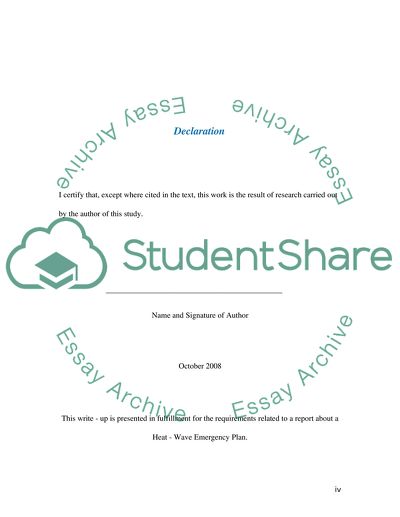Cite this document
(“Heat Emergency Plan Essay Example | Topics and Well Written Essays - 1500 words”, n.d.)
Retrieved from https://studentshare.org/miscellaneous/1548389-heat-emergency-plan
Retrieved from https://studentshare.org/miscellaneous/1548389-heat-emergency-plan
(Heat Emergency Plan Essay Example | Topics and Well Written Essays - 1500 Words)
https://studentshare.org/miscellaneous/1548389-heat-emergency-plan.
https://studentshare.org/miscellaneous/1548389-heat-emergency-plan.
“Heat Emergency Plan Essay Example | Topics and Well Written Essays - 1500 Words”, n.d. https://studentshare.org/miscellaneous/1548389-heat-emergency-plan.


